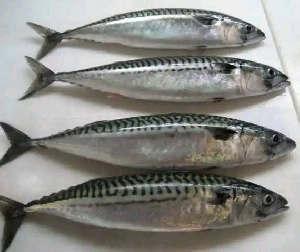
Fish is one of the healthiest foods in the world and a fantastic source of protein, claims healthline. It has a low saturated fat content, is high in omega-3 fatty acids, and is a fantastic source of calcium and vitamin D. But not all fish are created equal. When taken in big quantities, certain fish can be particularly rich in pollutants that are harmful to health. This post will look at some of the fish that are the riskiest to eat and why you should stay away from them.
Tuna
Popular fish called tuna is widely used in sushi and other meals. But it's important to remember that not all tuna is made equally. It's possible for some tuna species, such bluefin tuna, to have high mercury levels. Mercury is a dangerous heavy metal that can damage nerves, the kidneys, and the brain, among other organs.
Pregnant women and newborns' developing neurological systems are vulnerable to mercury damage. Pregnant women and small children are advised by the FDA to steer clear of eating certain seafood, such bluefin tuna, which may be high in mercury. If you decide to eat tuna, it is crucial to select kinds like skipjack tuna that have lower mercury content.
Shark
Another fish that can be damaging to one's health if consumed in high quantities is shark. Apex predators like sharks can build up enormous amounts of poisons in their bodies over time. High levels of mercury and other pollutants, including PCBs and dioxins, can be found in particular in shark flesh.
When taken in large doses, these toxins can harm the neurological system, immune system, and reproductive system, among other health problems. The FDA warns against eating shark and other mercury-rich seafood, such as swordfish and king mackerel, while pregnant or nursing.
Swordfish
Another fish that can be unhealthy to consume in high quantities is swordfish. Similar to shark, swordfish can have high levels of mercury as well as other pollutants including PCBs and dioxins. When taken in large doses, these toxins can harm the neurological system, immune system, and reproductive system, among other health problems.
The FDA warns against eating swordfish and other fish high in mercury, such shark and king mackerel, during pregnancy and in young children. If you decide to eat swordfish, it's crucial to pick the smaller varieties that have less mercury.
monarch mackerel
Another fish that can be unhealthy to consume in high quantities is king mackerel. King mackerel is eaten in enormous amounts, just like swordfish and shark. Like shark and swordfish, king mackerel may have high mercury concentrations as well as other pollutants like PCBs and dioxins.
When taken in large doses, these toxins can harm the neurological system, immune system, and reproductive system, among other health problems. The FDA warns against eating king mackerel and other fish high in mercury, such as shark and swordfish, during pregnancy and in young children.
Tilapia
Although tilapia is a popular fish for consumption, it is important to note that not all tilapia are the same. Tilapia from China and other Asian countries may have higher than average concentrations of pesticides and antibiotics, among other contaminants.
Antibiotic resistance as well as damage to the liver and kidneys are just a few of the health problems that can result from consuming too much of these chemicals. It is crucial to select tilapia that was grown in the US or another nation with strict restrictions on the use of antibiotics and pesticides.
Escolar
Escolar, often known as oilfish, is a fish that can be unhealthy if ingested in big quantities. Escolar includes a type of wax ester that, when ingested in large doses, can result in digestive problems like vomiting and diarrhea. Because of this, some countries have outlawed the selling of escolar entirely.
If you decide to eat escolar, it is crucial to do so in moderation and to make sure it is prepared properly. More severe symptoms, such as many days of greasy diarrhea, might result from eating escolar that is raw or undercooked.
Pufferfish
Pufferfish, also known as fugu in Japan, is prized as a delicacy in several regions of the world. It is important to remember, nevertheless, that pufferfish prepared incorrectly can be dangerous. The powerful tetrodotoxin in pufferfish has the potential to kill or paralyze victims in some situations.
In Japan, pufferfish preparation and service are only allowed by qualified chefs due to strict regulations and intensive training. At all costs, stay away from pufferfish if you are not a skilled professional.
Catfish
In the southern United States, where it is a popular fish, fried catfish is a common dish. But it's important to remember that not all catfish are made equally. Some catfish are grown in circumstances that may result in their flesh having higher than normal levels of toxins.
Particularly, catfish grown in Vietnam and other Asian countries may have high levels of toxins and antibiotics. The use of antibiotics and other pesticides is strictly regulated in the United States and other countries, thus it is imperative to choose farmed catfish from those countries.
Despite the fact that fish is often thought of as a healthy food, it is important to be aware of the potential hazards involved with consuming high amounts of some fish. Particularly among pregnant women and young children, mercury-rich species including tuna, shark, swordfish, and king mackerel can lead to a number of health problems. Even tiny amounts of other species, such escolar and pufferfish, can be harmful.
If you are worried about the potential risks of ingesting a certain kind of fish, speak with your doctor or a trained nutritionist. They can help you choose fish that is safe for modest eating and low in pollutants. We can accomplish our objectives by being aware of the potential hazards and taking action to reduce them.
